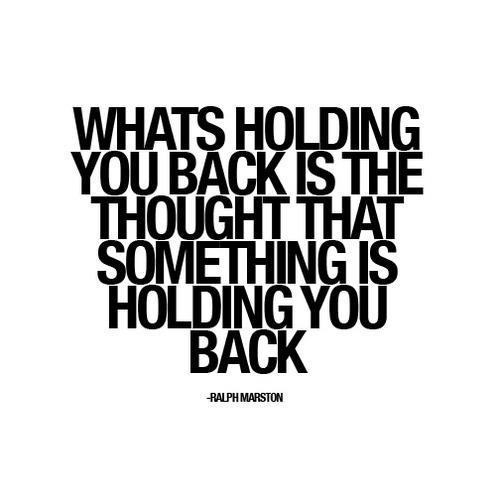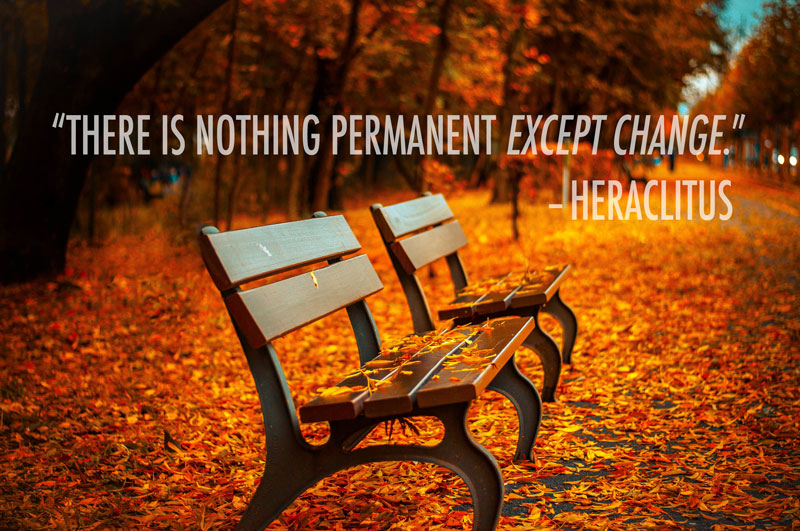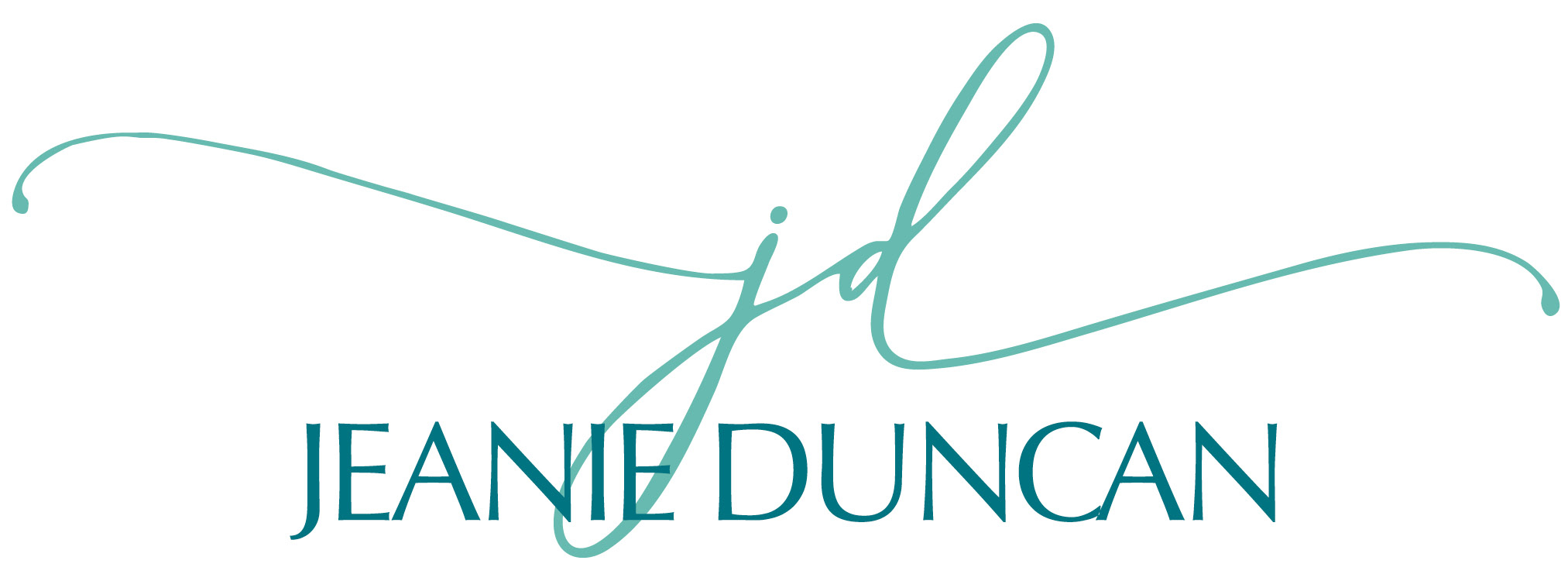
Aug 27, 2013 | Career, Coaching

I am a coach today because I’ve experienced coaching’s transformative power in my own life.
Over my career, I’ve worked with several coaches. I’ve hired them for career and leadership related priorities, but every time the impact of the coaching has been much farther-reaching, affecting me deeply as a whole person.
I remember the first time I hired a coach – I was contemplating a critical career move, pursuing the President and CEO position of a large nonprofit arts organization. At the time, I was director of development for the organization, a position I had held for several years. I was really excited about the opportunity; I felt ready for it, and the timing seemed right to me. But before making my thoughts known to my organization’s board and others, I wanted to be sure I was the right person for the job.
Because I was already internal to the organization, I knew how important it was for it to have the ideal leader who would bring great energy, fresh perspective, and new ideas. I wanted to test my assumptions that I was that person. At the time, I didn’t really know exactly what a coach did or how one would approach his or her work. I just knew that I needed a professional with whom to brainstorm confidentially—someone who could help me work through my critical career decision.
My coach listened to my story and asked a lot of questions. Her probing peeled back the layers and made me think of this transition, my readiness, and fit in ways I hadn’t previously…and wouldn’t have been able to do alone. I liked how she stretched and challenged me. It wasn’t simply what I thought, but why I held my thoughts and beliefs, and the impact of the actions I took based on those ideas.
The questions my coach asked seemed so simple, yet they were powerful and razor-sharp. Have you ever had an experience that made your head spin? This is what I remember about these encounters: I’d leave the session and need to sit in my car awhile before I could drive away. The shift she helped me create was profound.
After a few sessions, I confirmed my decision to pursue the opportunity, and in 2003 I was appointed to the position of President and CEO. It was exhilarating! I loved my new venture, and I went to work eagerly on my vision and goals for leading this great community organization.
About six months into my new role, I felt myself searching for a strategy partner – someone who could be a sounding board for my big dreams and ideas, as well as my frustrations, fears, and uncertainties. I wanted someone I could really trust and be vulnerable without fear. I had truly begun to understand the cliché, “It’s lonely at the top.” I could count on three fingers the number of people in whom I could confide. And none were quite who I needed to challenge and stretch me and to hold me accountable. So, for the second time in my career, I hired a coach.
“Our deepest fear is not that we are inadequate. Our deepest fear is that we are powerful beyond measure. It is our light, not our darkness, that most frightens us.” –Marianne Williamson
I remember the relief I felt when I found my new coach. With him, I didn’t have to be careful with my words, politically correct, or worried about what I said. It was completely freeing…and deeply empowering. He didn’t give me advice, problem-solve, or tell me what to do. But rather, my coach was my partner, posing thought-provoking questions and encouraging me to tap into my own inner wisdom and sense of knowing for direction. It was like an intense workout to develop new muscle.
I worked with him for about a year, and then asked for his help again years later when I made the decision to step down from my position. I knew I had completed what I set out to do in the role, but I wasn’t sure what I most wanted to do next. In working with my coach, I decided to take a year off to clear my mind, explore creative pursuits, and simply relax and play. It gave me much-needed time and space to ‘incubate’ what would come next.
During this year off I began to shape my own business. When I freed up my “internal hard drive,” I realized more clearly what I loved most and wanted to do. I had derived great satisfaction from helping organizations and their leaders tackle tough business issues, crises, and transitions. In my work, I often had been called upon to help nonprofit organizations with challenging matters related to funding, personnel, governance, and programming. I reflected on my best work in assessing and navigating the complexity of these uncertain and often turbulent situations and inter-relationships. My coach helped me see that this work I’d been doing—and really enjoying—was organizational and individual coaching.
I proceeded to complete training and certification through the Coaches Training Institute (CTI), the largest and oldest coach training organization in the world. Coaching is a core part of my business today because of my own personal experience in working with a coach and my passion for helping others navigate their challenges and opportunities and realize their greatest potential. I continue to experience coaching’s transformative power in my life, and I am gratified to see its impact on my clients. I can think of no greater joy.
 About Jeanie Duncan: Jeanie is President of Raven Consulting Group, a business she founded that focuses on organizational change and leadership development in the nonprofit sector. She is a senior consultant for Raffa, a national firm working with nonprofit clients to lead efforts in sustainability and succession planning, executive transition and search. Additionally, Jeanie serves as adjunct faculty for the Center for Creative Leadership, a top-ranked, global provider of executive leadership education.
About Jeanie Duncan: Jeanie is President of Raven Consulting Group, a business she founded that focuses on organizational change and leadership development in the nonprofit sector. She is a senior consultant for Raffa, a national firm working with nonprofit clients to lead efforts in sustainability and succession planning, executive transition and search. Additionally, Jeanie serves as adjunct faculty for the Center for Creative Leadership, a top-ranked, global provider of executive leadership education.

Apr 28, 2013 | Intention

A Raven Reflection on a shared blog post from empowerlounge.com April 25, 2013
Do you have an inner voice full of negativity? Quietly nattering at you at every turn, asking you what business you have thinking you can make this successful? That you aren’t smart enough, gorgeous enough or hip enough to accomplish your goals? Studies have proven that it IS possible to turn that voice around, or even off. A mirror can help. Stand in front of a mirror and look yourself in the eye. Pick a phrase that is a direct hit to your inner critic. For example “I am enough” or “I am a successful business woman!” Stick these positive affirmations on your mirror so you see them daily!
Include in your daily routine:
- Knocking 3 things off your priority list to build confidence and create momentum
- Reading inspirational quotes and magazines (and Empower Lounge!)
- Calling or gathering with positive, supportive peers
- Getting outside, it works like magic every time.
- Making yourself comfortable with failure! It’s the one thing we all have in common, happens to the best of us and we’re stronger and smarter because of it!
~ ~ ~ ~
This blog post really hit home for me. Can you relate?
Just earlier this week, I had a session with my coach. I was grumbling about a task that was going to be really difficult and time consuming when she jumped in “Really? Who says?”
A puzzled look came over my face and I replied, “Well everyone says it is.” She countered “What if it’s not? What perspective would you like to have? What if it’s easy? What if it’s fun?”
That simple question “What perspective would I like to have?” stopped me in my tracks. I hadn’t even done this task before and already I was approaching it as hard, difficult, and time consuming. How excited do you think I was to get started? You guessed it.
Now, after a few days of marinating on that powerful thought, I’ve approached my task with a new and positive attitude, come up with fresh ideas, and experienced forward movement in getting started on this new work. I’m reminded that I am always in choice…for how I respond, react, and approach things in my every day.
Our thoughts create our reality. How are you shaping your thoughts today?
Jeanie is President of Raven Consulting Group, a business she founded that focuses on organizational change and leadership development in the nonprofit sector. She is a senior consultant for TransitionGuides, a national firm working with nonprofit clients to lead efforts in sustainability and succession planning, executive transition and search. Additionally, Jeanie serves as adjunct faculty for the Center for Creative Leadership, a top-ranked, global provider of executive leadership education.

Apr 14, 2013 | Transition & Change

“There is nothing permanent except change.” – Heraclitus
Change and transition are at the core of my consulting and coaching work with organizations and individuals. I find myself attracted to this constant movement of life. Even when things appear to be steady, they’re continually evolving and becoming. Rather than resist, why not grab hold of that energy and proactively shape what’s becoming? Easier said than done, right?
What I have found is that change – the specific event itself – is not the greatest challenge, although at first it may appear to be. The toughest part is dealing with what comes as a result of that event, the dynamic and complex human elements of transition. It’s not easy letting go of what we’re comfortable with and leaping into the unknown. It can be a place of great uncertainty and trepidation. Makes you want to jump right in, doesn’t it?
Whether you’re the type that repels change or embraces it, below are a few ideas for how to make it a bit more manageable.
1. Make small steps or break up large-scale changes into more manageable increments.
2. Mentally link changes to established daily rituals. This can make changes like beginning a new habit, starting a new job, or adapting to a new home happen with greater ease.
3. Stay flexible, adaptable and ‘go with the flow.’ It can help you accept change instead of resisting it.
4. Look for the good that change brings. An illness, a broken relationship, or the loss of a promotion or job can seem like the end of the world, yet often they’re also gifts in disguise.
5. Reflect on your greatest learnings through the process and apply to future situations.
6. Be prepared for the unexpected during change and transition. While it’s impossible to know everything that will happen in advance, anticipating certain elements will help make the situation less overwhelming.
7. Remember that you’re not alone. Writing or talking about your circumstance with a colleague or friend can give you a sense of relief while helping you navigate through a challenging period.
8. Give yourself time to accept changes that you face, recognizing that you may need time to adjust to your new situation.
9. No matter how large or difficult a change is, you will eventually adapt to your new circumstances. The new that it brings will eventually weave itself into the right places in your life.
10. If you’re trying to change a pattern of behavior or navigate your way through a significant change, don’t assume that it has to be easy. Expressing your feelings and emotions during a period of change is natural. Then again, don’t assume that making a change needs to be hard. Sometimes, changes are meant to be that easy.
“We cannot change anything until we accept it. Condemnation does not liberate, it oppresses.” – Carl Jung
_________
Jeanie is President of Raven Consulting Group, a business she founded that focuses on organizational change and leadership development in the nonprofit sector. She is a senior consultant for TransitionGuides, a national firm working with nonprofit clients to lead efforts in sustainability and succession planning, executive transition and search. Additionally, Jeanie serves as adjunct faculty for the Center for Creative Leadership, a top-ranked, global provider of executive leadership education.

Aug 1, 2012 | Leadership, Strategy
 Some consider visioning to be a fluff exercise rather than an effective personal or business development strategy. After all – in both our personal and business lives – we spend the majority of our time working ‘in it,’ rather than ‘on it.’ However, dedicating time to thinking about the future can be a critical investment that reaps big rewards. How do I know that? I have proven it for myself and for my clients. In fact, I have found that visioning is 100% smart business practice, helping organizations and individuals within them chart the course, set goals, and measure progress – all of which directly impact the bottom line.
Some consider visioning to be a fluff exercise rather than an effective personal or business development strategy. After all – in both our personal and business lives – we spend the majority of our time working ‘in it,’ rather than ‘on it.’ However, dedicating time to thinking about the future can be a critical investment that reaps big rewards. How do I know that? I have proven it for myself and for my clients. In fact, I have found that visioning is 100% smart business practice, helping organizations and individuals within them chart the course, set goals, and measure progress – all of which directly impact the bottom line.
Two years ago, I gave myself a gift: a 12-month sabbatical. I had recently left a top leadership post as an arts administrator, knowing that I had completed what I set out to do for the organization. But I didn’t quite know what would come next. I needed a little “white space” between completing a very consuming role and beginning my next venture – a little time off to choose activities that helped me think, discover, and refill my creative well.
One day while reading The Law of Attraction by Esther and Jerry Hicks, I came across a visioning exercise called the “creative workshop.” The concept is to spend about 20 minutes each day giving thought to what you want with great clarity, describing and refining a fulfilling picture of yourself – and the life you want to live. (The idea, of course, is that you attract and create that on which you focus.)
Ultimately, that exercise led me to create a two-year vision of the most full, enriching, and satisfying life I could imagine. I then laid out specific actions I’d take to guide me toward my longer-term vision. After all, what good is a vision without a plan to get there?
What I thought initially was a simple (fluffy) exercise ended up having a profound effect (who knew?). It was as if I had sprinkled fairy dust or Miracle Gro® on my life. Each day, I’d re-read and think about my vision and action plan. The phone started to ring, emails arrived, and certain people would simply appear in my day – everywhere from the gas station to the ball field. As if I were a magnet, resources steadily came to me, each of which had a part to play in helping me fulfill my vision.
That was two years ago. Recently, I decided to repeat this “workshop” again for myself, and I am having a similar experience – only this time, my vision seems to have expanded. And once again, I can sense the amazing personal growth beginning to happen.
“We should change our perspective from ‘I’ll believe it when I see it’ to ‘I’ll see it when I believe it.'”
– Chuck Duncan
As individuals, we give so much thought and energy to our work, our co-workers, and to our family and friends that we often forget to invest in ourselves. I observed a sign on a colleague’s desk recently that read, “Me First.” While at first this might seem amusing or even appear egocentric, all of us have to remember that if we don’t first focus on ourselves, we have less to give others.
The same thing happens with organizations: visioning is often put off or lost altogether, with a team’s time and effort immersed in the day-to-day details and priorities. Yet such future-thinking exercises don’t have to be daunting undertakings; they can be incorporated into regular staff or board meetings or be integrated into a periodic planning process. I’ve used a version of this visioning exercise with clients in strategy development, sustainability planning, leadership transitions, and coaching. What I’ve found is that individuals and businesses who roll up their sleeves and take action to do it get great results and rewards.
Visioning, when accompanied by smart planning and consistent focus, can yield true transformation for you and for the organizations you work to improve. Getting started is easier than you think!
- Set aside some uninterrupted time. I suggest an hour, but a few sessions at 20 minutes each also can be effective.
- Pick a point in the future – it can be weeks, months, or years.
- Imagine a life (or business) that is vibrant and fulfilling beyond your greatest expectations.
- Give yourself permission without boundaries to dream and create.
- Describe what you’re imagining in specific, vivid detail.
It may not come easily at first, but with a little time spent – perhaps over a few days/sessions – clarity and details are likely to take shape.
Once the intention is set, give attention to your new vision and plan – and enjoy what begins to manifest itself.
“You get what you think about, whether you want it or not.”
– Jerry Hicks
photo credit: Ross Manges Photography via photopin cc
Jan 29, 2012 | Management
When a nonprofit organization experiences a leadership transition, hiring an interim executive director can be the most logical and positive action its board can take.
Leadership change is an increasingly common aspect of nonprofit organizational life. Multiple studies reinforce the impending turnover of top leadership in the nonprofit sector, due in great part to the aging and retiring boomer population. It’s not a matter of if, but when the change is coming. When your organization experiences this transition, research and practice suggests that groups that plan well and use a skilled interim executive director, emerge stronger, more fiscally sound, and with higher levels of optimism about the future impact of their programs and services.
Leadership transition is a period commonly marked with emotion, tension, and stress. Internally, staff and board are in the midst of separating from the previous executive, and the departing director is in an in-between state and can be confused about how much influence he or she wants or should have on the agency’s future. If the director’s departure is forced, emotions may be particularly high.
Externally, some funders, donors, and volunteers will take a “wait and see” approach before becoming involved and investing in the organization. This can create strain between needs and resources, further taxing administrative systems.
A highly skilled interim executive director temporarily takes the helm of an organization, helps the board and staff address important systems and capacity issues, and lays the groundwork for the following leader’s success. This leader:
– Serves as a bridge, giving the board ample time to conduct a thoughtful search process and managing the day-to-day executive responsibilities that include: conducting an objective organizational review, leading anxious staff, reassuring wary funders, and keeping finances and revenue generation on track.
– Tackles unique challenges related to the transition, building on strengths and addressing particular vulnerabilities.
– Helps the board clarify its vision and future leadership needs.
– Models excellence in management and leadership.
– Mentors the new executive director once appointed.
When considering hiring an interim executive director for your organization:
– Begin with the end in mind. Your board should determine what it wants and needs and what is most critical to success over the next few months.
– Identify urgent issues or challenges presently facing your organization.
– Review the current executive director’s job description, determine priorities for the transition period, and draft an Interim job description.
– Seek an interim executive director with solid management experience and a transition skillset. This takes precedence over familiarity with your organization or industry.
– Consider that the assignment is both temporary (four-eight months) and part-time (20 – 25 hours/week) and that the individual should not be a candidate for the full-time position.
– Realize that, due to the unique demands of the role, interim executives are almost always paid higher on an hourly basis than the agency’s permanent executive (although, most interims are part-time and do not receive normal agency benefits).
– Tap local resources for potential candidates, such as area college nonprofit degree programs, consultants serving the nonprofit sector, industry sector affinity groups, and nonprofit consortiums.
There is great power and potential in this “neutral zone” – the space after the former director leaves and the new leader begins. The organization is more open to change than usual and poised to leverage the heightened opportunity. Systems and culture become a bit “unglued” and can be put back together in new and exciting ways that leave the nonprofit stronger and more sustainable.

 About Jeanie Duncan: Jeanie is President of Raven Consulting Group, a business she founded that focuses on organizational change and leadership development in the nonprofit sector. She is a senior consultant for Raffa, a national firm working with nonprofit clients to lead efforts in sustainability and succession planning, executive transition and search. Additionally, Jeanie serves as adjunct faculty for the Center for Creative Leadership, a top-ranked, global provider of executive leadership education.
About Jeanie Duncan: Jeanie is President of Raven Consulting Group, a business she founded that focuses on organizational change and leadership development in the nonprofit sector. She is a senior consultant for Raffa, a national firm working with nonprofit clients to lead efforts in sustainability and succession planning, executive transition and search. Additionally, Jeanie serves as adjunct faculty for the Center for Creative Leadership, a top-ranked, global provider of executive leadership education.






